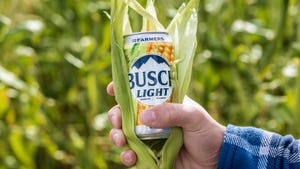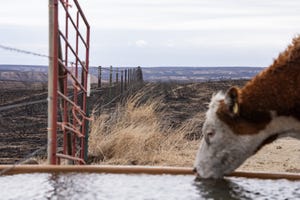Cattle Market Top Ten List For 2011
As we begin a new year, we always see a lot of predictions for the upcoming year, whether it be for the most popular movies, the most glamorous people, the hottest cars, etc.
January 5, 2011

As we begin a new year, we always see a lot of predictions for the upcoming year, whether it be for the most popular movies, the most glamorous people, the hottest cars, etc. While I sure can’t offer any insight into those important pop-culture topics, I could offer my best guesses for what we’ll see in the cattle market this year. So, here is my Cattle Market Top Ten List for 2011.
10. Heavier carcass weights. In the last twenty-five years, cattle dressed weights have increased nearly 150 lbs, from about 650 lbs in the mid-1980s to almost 800 lbs in recent years. That’s an average gain of about six pounds per year, or just under 1% each year. So, the 1.4% decline in average cattle carcass weight in 2010 was relatively unusual. The harsh 2009-10 winter quickly dropped weights at the beginning of 2010 and cattle feeders, incentivized by high cattle prices, kept marketings quite current through the remainder of the year. Expectations for higher corn prices in 2011 (see #2) would suggest that cattle weights would continue to drop in 2011. However, over capacity in the cattle feeding sector and a shrinking supply of feeder cattle to place will encourage cattle feeders to keep cattle on feed for longer periods of time. For commercial cattle feeders, doing so creates headdays that can billed for yardage expenses of about $0.40/head per day. By reducing turnover, not only do feedyards need fewer replacements, but they can also avoid laying off employees. Given that there are some modest feeding profits available through hedging (see #7), it is likely that the need to maintain feedyard inventories as high as possible will trump the impact of high corn prices on cattle feeding margins, at least in the short run. Further, with higher corn prices and costs of gain for feeding cattle, more grass-based backgrounding and stockering programs will be utilized next summer and placements could shift back to yearlings in the second half of the year. Placements of heavier cattle typically result in heavier finished weights.
9. Value-based marketing. Consumer demand for traceability, transparency, and other information about the food they purchase has lead to the development of several programs designed to meet these needs. This is especially evident for foreign customers who have age, source, hormone, or other requirements associated with the U.S. beef they import. Domestically, consumer demand for information transparency continues to be a growing trend as well. Not only have more cow-calf producers and cattle feeders implemented PVP or QSA programs to produce beef for these outlets, but also an increasing number of livestock markets, sale barns, and other dealers have taken steps to participate in these programs. Consequently, differential pricing for feeder cattle and slaughter cattle is becoming more prevalent and premiums for various age, source, or other quality or credence attributes are increasingly used in the marketplace.
8. Animal rights. For the last couple of years, the animal rights agenda was aggressively advanced by anti-agriculture groups. However, by the end of 2010, it appears like efforts by agricultural interest groups and producers were increasingly successful at educating consumers about the difference between animal rights and animal welfare. Continued communication efforts through social media outlets, mainstream media, and face-to-face discussions about the steps producers and processors routinely take to protect the well being of their animals should have a positive impact on consumers in the new year.
To read the entire article, link here.
You May Also Like

.png?width=300&auto=webp&quality=80&disable=upscale)

